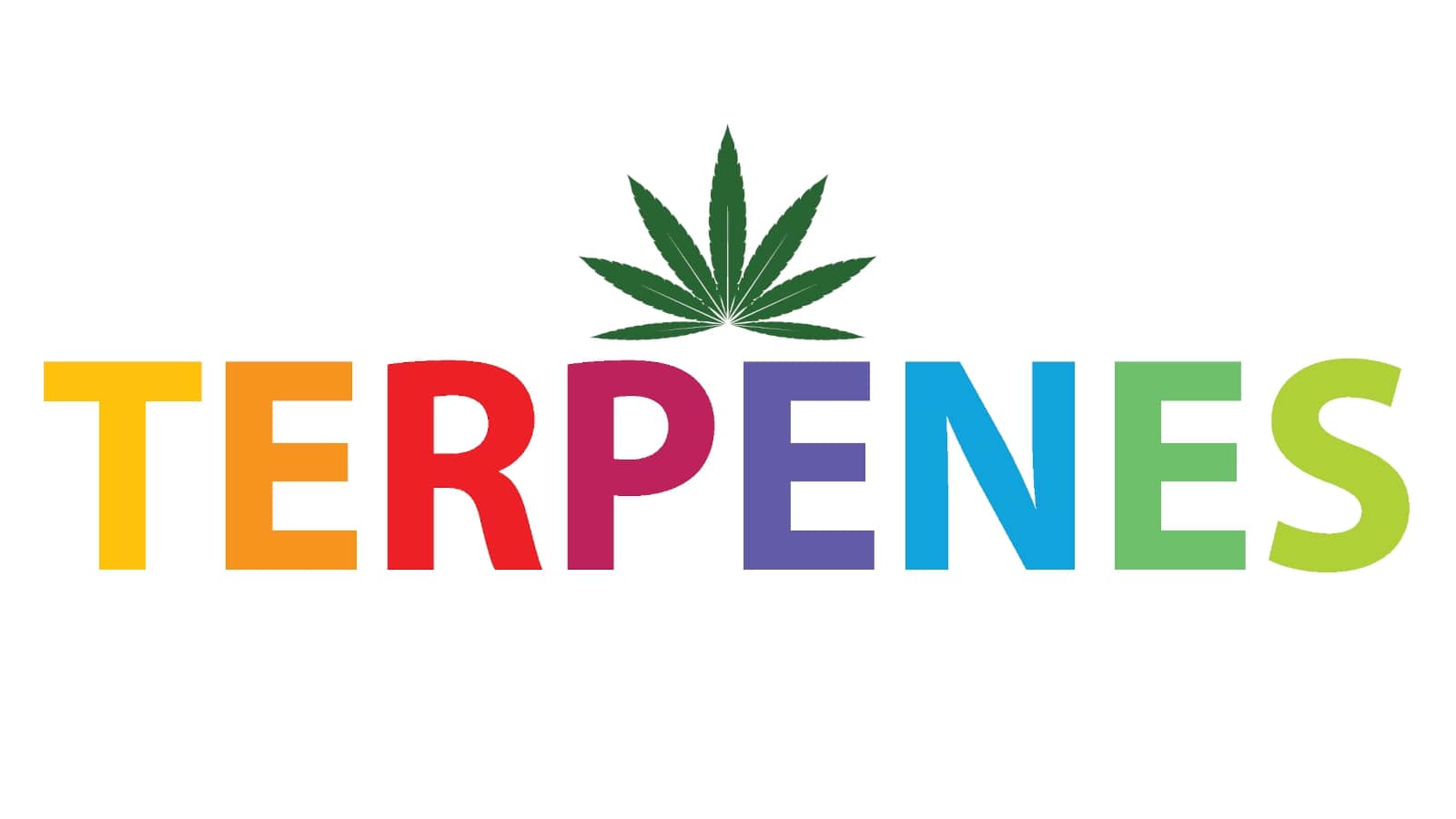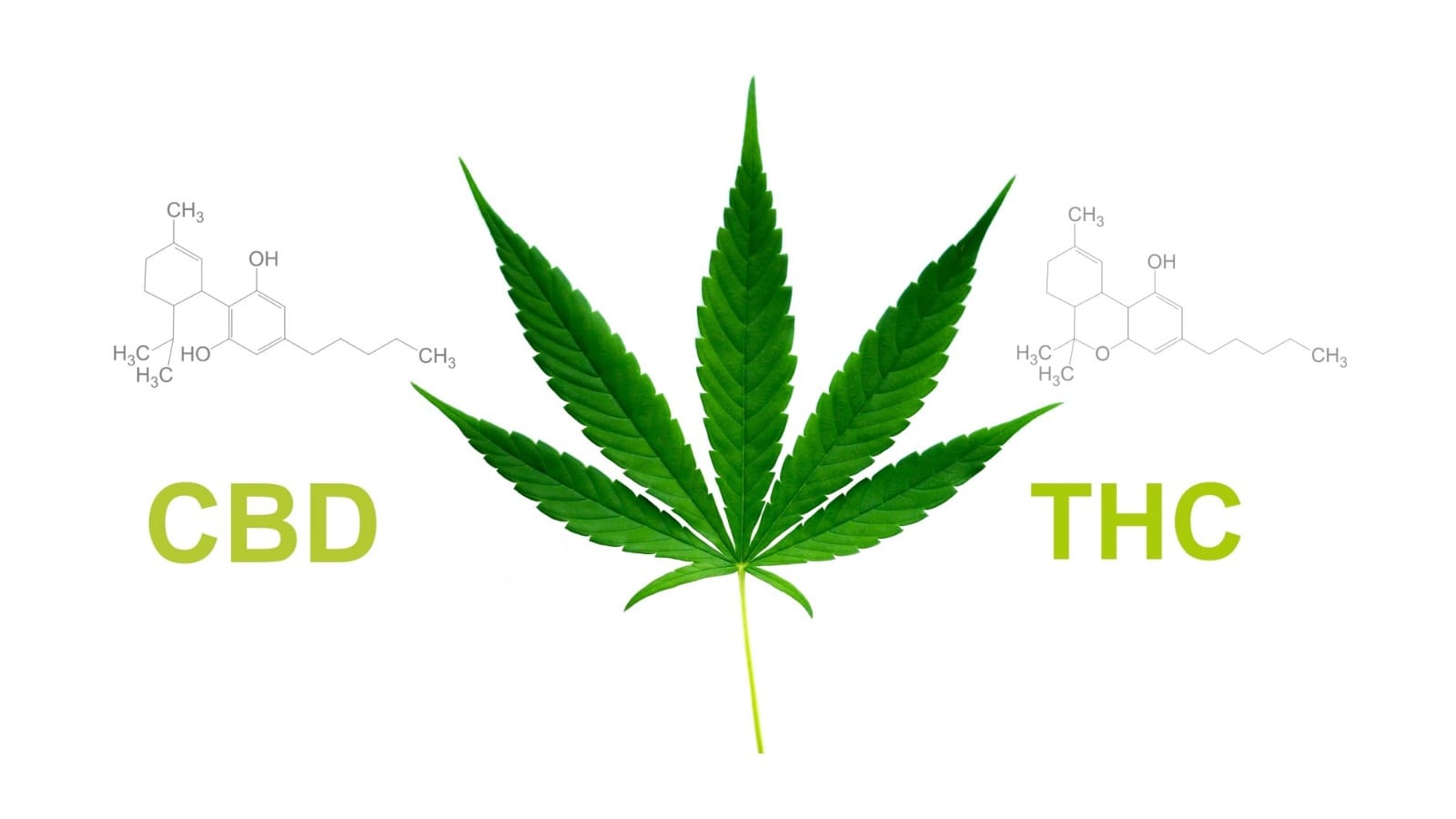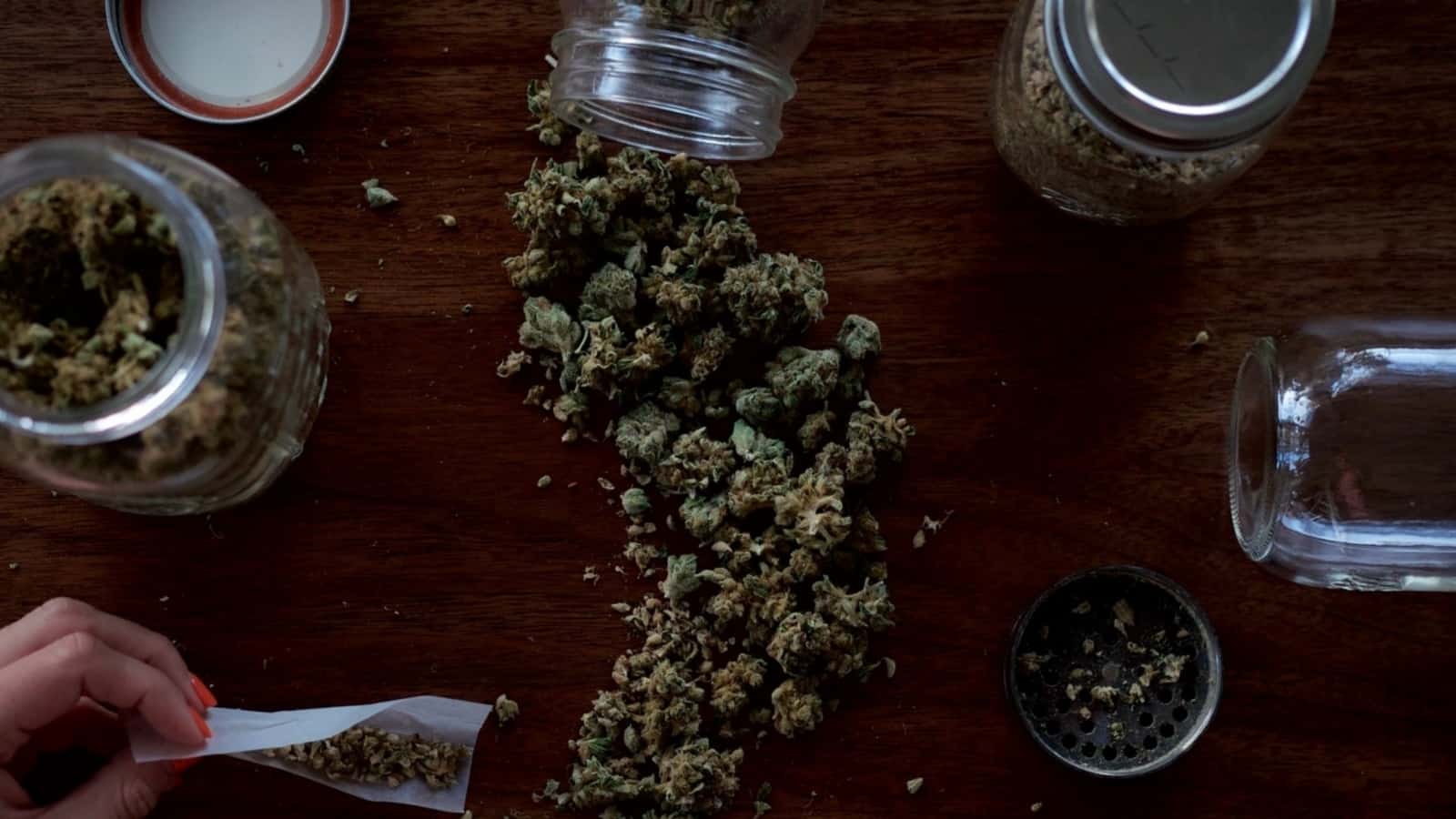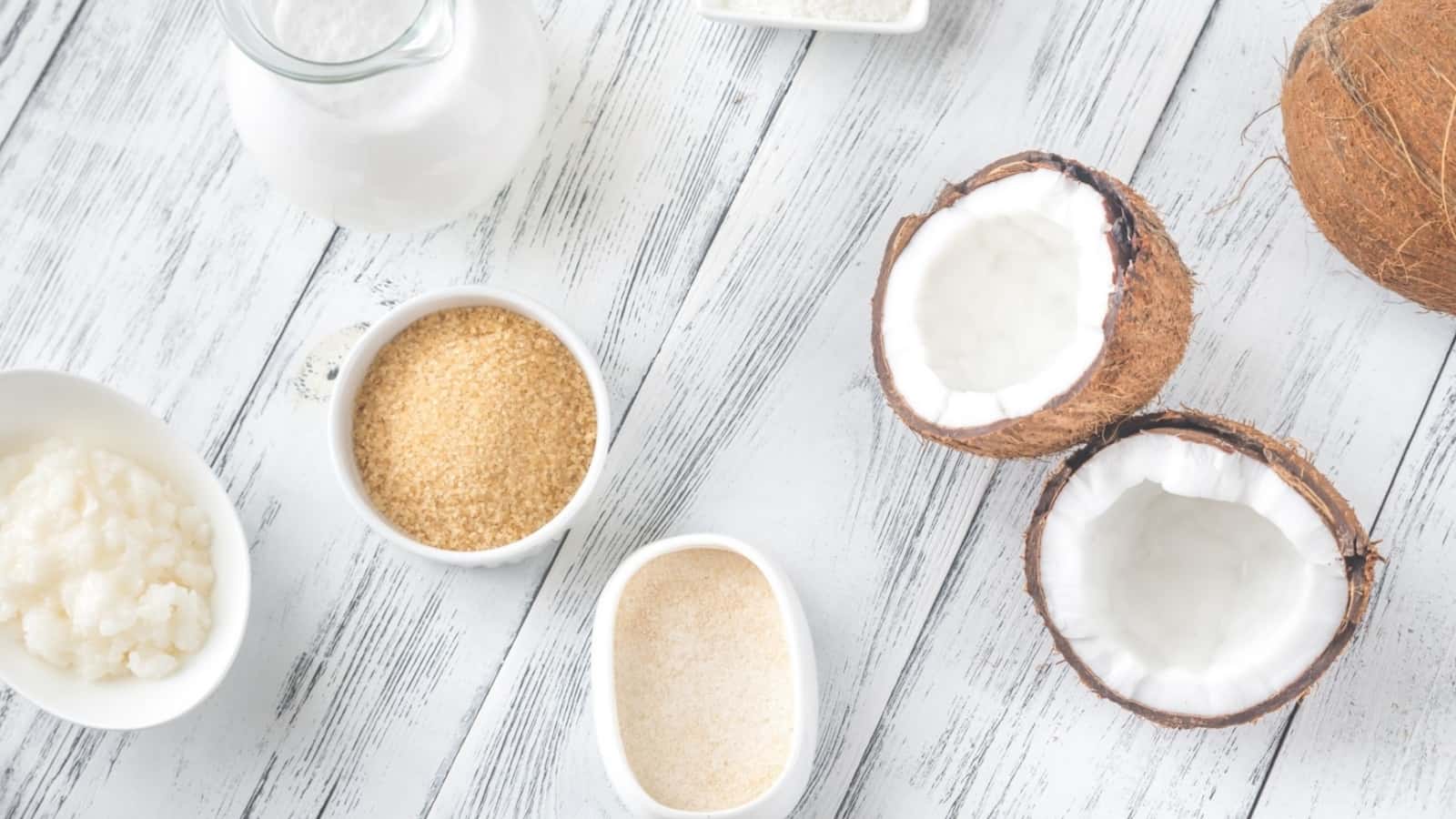
Cannabis Terpenes: What Are They And What Do They Do?
- Terpenes Synergistic Effects
- What are Flavonoids?
- The Terpene Wheel
- A List Of Terpenes in Cannabis
- Myrcene Terpenes
- Pinene Terpenes
- Limonene Terpene
- Caryophyllene Terpenes
- Linalool Terpenes
- Terpinolene Terpenes
- Camphene Terpene
- Terpineol Terpenes
- Phellandrene Terpene
- Carene Terpenes
- Humulene Terpene
- Pulegone Terpene
- Sabinene Terpene
- Geraniol Terpene
A very extensive range of compounds and chemicals are found in the cannabis plant. Out of the total plant varieties, around 140 varieties fall into the Terpenes class - the class that contains scented natural hydrocarbons.
It is pronounced as Tur-Peens. This term - terpenes - often gets confused with the most frequently heard word called terpenoids. Though these words are sound similar and are switched due to resemblance, they have different meanings.
The main differences between both the terms are:
- Terpenes - these are hydrocarbons that contain only carbon and hydrogen.
- Terpenoids - The natural qualities are altered and modified with the help of the oxidation process.
These terpenes lie within the glandular trichomes of the cannabis plant. And, within trichomes in they are further synthesized in the secretory cells.
Their production is intensified with additional light coverage. Unfertilized female cannabis flowers are flooded with the highly potent terpenes before its senescence process, i.e. the condition of aging (or deterioration due to time factor).
To extract the plant contents, Steam Distillation (Vaporization) is used.
The evaporation temperature or the boiling point of most of the terpenes is 1570C, which is identical to the vaporization point of THC. But some of the cannabis terpenes are more unstable and require more delicate extraction methods.
One more critical function of terpenes is providing the natural defence from various types of harmful bacteria, insects, fungus, and different natural pressures, to the cannabis plant.
The most extensively studied part of the cannabis plant has been performed on Delta-9-Tetrahydrocannabinol (THC) - one of the chief psychotropic cannabinoids.
Unfortunately, most of the other parts of the cannabis plant has been ignored up until recent years. The terpenoids, cannabinoids, and flavonoids, that are found in medical marijuana are not studied to that extent, even though they may have excellent therapeutic effects on the patients.
Terpenes are widely used in the food and aromatic industries for flavouring and inducing fragrance, respectively. The main reason is terpenes are 100% responsible for the cannabis aroma. Most of the government agencies, including the American FDA and the Australian TGA departments, have given terpenes as Safe to Use’ recognition.
The positive psychological effects of Terpenes can be listed down as:
- Acts on the neurotransmitters and receptors of the human brain
- Are liable to melt bodily fats or lipids
- Perform the role of up-taking Serotonin (a blood-compound that acts as a neurotransmitter) similar to the effect of Prozac - widely used antidepressants.
- Triggers norepinephrine activities - tricyclic antidepressants similar to Elavil
- Increase Dopamine activities- a body-compound that acts as a neurotransmitter.
- Build-up GABA (gamma-aminobutyric acid)
All the effects listed above are without any structured study. Hence, in-depth research is required to get accurate results with regards to how Terpenes can be utilized to their 100% medicinal benefits and eradicate various health ailments.
Table of Contents.
Terpenes Synergistic Effects
There was a study conducted by Carlini et al. that showed there can be very positive effects from THC and other cannabis constituents’ on the Synaptic plasticity of human beings, which enhances potentiation (the learning capacity of human beings)?
The double-blind study (results not disclosed until the test is authorized and confirmed) was undertaken, wherein, when the cannabis with the same or additional levels CBN and CBD to THC was used, the resulted effects were more than two to four times higher than the THC content used as a single ingredient.
Furthermore, these study results were strengthened after the research undertaken by Wilkinson et al. concerning whether it is advantageous to use cannabis extracts together or as separate concentrated extracts.
This experiment was done using the following extracts:
- Standardized Cannabis Extract of THC.
- CBD
- CBN (SCE)
And comparing them with two elements - pure THC and CBD (THC-free extract) on a mouse model of Multiple Sclerosis (MS); it gave a perfect study of rat Brain Slice Model Of Epilepsy.
Following were the results:
- SCE slowed down the spasticity in the MS model (when compared with the only THC) and gave a faster muscle relaxation with lesser time than using the only THC.
- There was no slowing down in the spasticity by using only CBD.
- In this experiment of the Epilepsy Model, the SCE showed higher potency & furiously acting as anticonvulsant than exclusive THC.
- Even CBD showed anticonvulsant activities and did not inhibit seizures, nor did it modulate the THC activities.
- This proved that some of the cannabis actions did not regulate THC activities. Hence, some of the actions of cannabis like anti-spasticity, which were due to THC as one single constituent was because of the presence of other components.
- All the above results confirmed that not all the therapeutic actions of cannabis herb are due to the THC content.
- All the above results confirmed that THC content - present in the cannabis herb - is not responsible for all the therapeutic actions.
This Epilepsy model gets strong support from Dr. Ethan Russo by providing scientific proofs. As per his studies:
- Non-cannabinoid plant components, like terpenes, act as inhibitors to THC’s mind-altering effect, thus increasing the therapeutic index of THC.
- Russo terms this as “The Phytocannabinoid-terpenoid Synergy”, and it enhances the prospective medicinal effects of the cannabis-based products to treat inflammation, discomfort, contaminations, nervousness, melancholy, habit, epilepsy, including cancer!
What are Flavonoids?
Around 6000+, various types of nutrients have been acknowledged by the scientists, which are termed as Flavonoids. And hence Flavonoids is one of the largest Nutrient Families known to humankind.
Some of the essential compounds that are found in the cannabis plant are - Vitexin, Kaempferol, Isovitexin, β-sitosterol, Apigenin, Cannflavin A and Cannflavin B, Quercetin, Luteolin, and Orentin!
Flavonoids contents act as the superior quality anti-inflammatory and antioxidants. They support the food industry on an enormous scale because of their rich colour content, which is vastly used to create attractive colours for food products.
To quote an example; blue colour is extracted from blueberries, and red colour is extracted from raspberries.
Some of the flavonoids that are extracted from the cannabis plant are also used in the field of pharmacy.
Most of the clinical readings are highly positive. But the importance of these positive effects, in the field of medicine, is not studied to its fullest.
No doubt Cannabis Treatment with regards to the patients, flavonoids play a very promising therapeutic role. But it requires in-depth research, especially in the case of the flavonoids interaction with the cannabinoids, either by working together to increase the effects or to reduce the same.
The Terpene Wheel
Terpenes are considered to be the most basic element on which the entire complicated structure of phytohormones (plant hormones that control all the plant activities), colour, sterols (unsaturated steroid), and cannabinoids is formulated.
The most crucial responsibility terpene undertakes is implementing smell (pleasant or unpleasant) to the cannabis and also in what manner it will affect physiologically when consumed.
Before the actual use and selection, all the patients are advised to smell cannabis. The basic idea is these aromas will help to proactively understand their effects.
Medical marijuana strains (flower’s exclusive variety) differ from two different yields or two different birthplaces - as confirmed by the Casano et al study!
But, when compared with other strains, the terpenes that are highly concentrated in specific strain variety can be very easily identified by their strong odour.
Different smell varieties depict different effects on the patients:
- The aroma of clove or musk provides a very soothing and sedative effect due to the excessive level of Myrcene terpene.
- The aroma of Pine or piney aroma provides psychological attentiveness and enhanced remembering capacity due to the excessive level of Pinene terpene.
- The aroma of Lemon or lemony aromas provides temperament enhancement and boldness due to the extreme level of Limonene terpene.

A Flavor Wheel was developed by Green House Seed Company in its spectral analysis study.
In this analysis, the marijuana patients were able to identify the terpenes in each of their strain choice and the expected effects.
The main aim of the flavour wheel though was to promote various types of seeds of this company. But, when all the factors those were required to derive this flavour wheel like - its basic idea, use of various scientific terms, the entire concept - made it a very very valuable instrument for all those involved in the chain of the cannabis plant - Patients, growers, and caregivers.
Now, this has become a trend in most of the companies - to develop their terpene and weed flavor wheels with a similar intention - for marketing their services and products.
With the help of terpene mapping, it is possible to forecast (or influence) all the factors involved like - medical values of different varieties.
This offers limitless opportunities to the breeders for inventing new high-demand cannabis strains with the help of accurate, logical statistics.
When there is a perfect synchronization in the language of all - the breeders, seller, and the patients - it becomes very easy to understand for the patients what medicine they are opting for in advance.
A List Of Terpenes in Cannabis
Here we break down all the relevant terpenes and their relationship with cannabis and the human body.
Myrcene Terpenes
The common-most terpene produced by Cannabis is Myrcene, especially - myrcene. Myrcene is a monoterpene and in some species has around 60% of the essential oil. Though it smells similar to cloves, its smell can be described as pungent, plain, and organic.
The very famous Couch-Lock Effect (blissful physical sedation) of traditional Indica strains is bestowed when the myrcene level in cannabis is more than 0.5%.
You can get ample traces of myrcene in - Citrus fruits, Bay leaves, Hops, Eucalyptus, Lemon Grass, Wile Thyme, etc. Myrcene has a very unique medical property - It can lower the resistance throughout the blood to brain barrier by itself and crossing the barrier faster with the help of other chemicals.
In the case of THC, myrcene enhances the speed of the cannabinoid effects.
Interestingly, the studies have shown that myrcene is responsible for enhancing the highest saturation level of the CB1 receptor, thus bestowing a very high psychoactive effect on the patients.
By eating any citrus fruit, like fresh mango or orange, before about 45 minutes of cannabis consumption, you can get a speedy psycho effect with high power. It is required to choose a very ripe fruit because it contains a higher percentage of myrcene, thus giving you that extra high!
Pinene Terpenes
As the name suggests, Pinene has a unique smell of fir and pine. It belongs to a Bicyclic (means it has two embedded rings of atoms within its molecule) Monoterpenoid (belongs to the class C10 skeleton) family.
In its natural form Pinene is found in two structural isomers; alpha-Pinene and β-pinene.
β-pinene is a natural compound separated from pine needle oil and has cancer-curing properties. This isomer is available in very high quantities in nature. This is also used in different forms of ancient Chinese medicines.
These are the most critical forms found in Pine Resin. Pinene is found in non-coniferous as well as conifers plants and mostly located in balsamic resin, citrus fruits, and pine woods.
The above mentioned two isomers are the main components of wood turpentine. The main property of Pinene is it reacts with various other chemicals and form different types of terpenes like limonene and various other compounds. When mixed with THC, Pinene reduces the overall effects.
Limonene Terpene
It is one of the monocyclic monoterpenoids that is derived from Pinene. Limonene has a very pungent citrusy odour due to the high contents of limonene - similar to limes, oranges, or lemons. Limonene is useful in mood up-lifting.
Limonene, when inhaled, immediately gets a place in the bloodstream and enhances the absorption of different terpenes through skin pores and other body tissues.
It has an antifungal property that subdues the anti-elements like fungi, bacteria, etc. and is used to cure toenail fungus. Currently, orally controlled limonene is being tested for breast cancer.
Good news to all the dieticians: Limonene is found to be one of the best components to promote weight loss.
Limonene is used as an organic insecticide to shunt away unwarranted plant raiders.
One more utility of limonene is unveiled by the modern science that comprises of the most active citrus cleansing agent.
No doubt, for decades together, limonene was used as the prominent ingredient in the food and perfume industries. Hardly, limonene depicts any kind of adverse effects as it has a very low toxic effect.
Caryophyllene Terpenes
β-Caryophyllene belongs to the Sespuiterpene (consisting of 3 isoprene units with a molecular formula C15H24) family.
Its presence is seen in most of the well-known plants like Cloves, Cinnamon Leaves, Thai Basils, Black Pepper, and Lavender (small quantities).
It has a wood-like, fiery-pepper like, and highly spiced smell, and this is the only terpene family member that can interact with the CB2 system, i.e. endocannabinoid.
Not only β-Caryophyllene has shown peculiar qualities to treat cancer but also exclusively fixes itself to the endocannabinoid receptor system and initiates a physiological response.
Here are some of the important findings from the various studies conducted on Caryophyllene:
-
The Rosenfeld/Fine Pain Study: The studies were conducted by - the oral intake of the combination of the rest of the phytocannabinoids along with CBD and β-Caryophyllene to the deserving candidates showed a very positive response in treating their lingering pain.
- The Horvath B study: During chemotherapy (anti-cancer treatment) a drug named Cisplatin has to be given to the patient. It may have poisonous effects on the kidneys, which is termed as nephrotoxicity in medical language. When β-Caryophyllene is enrooted through the CB2 receptors, it may act as an excellent therapeutic remedy to subdue the effects of Cisplatin.
- The Jeena, Liju, et al study: To study its medicinal importance the essential oil was separated from black pepper, which contains Caryophyllene as the primary component Studies proved that high strains of Caryophyllene were very useful in treating neuropathy pain and arthritis.
β-Caryophyllene is also used in chewing gum by mixing it with various other citrus flavourings.
Linalool Terpenes
Linalool is one of the non-cyclic monoterpenoids (belongs to the class C10 skeleton) with a few traces of lavender and floral. Linalool provides high serenity, calmness, and relaxation.
The aroma of linalool is extremely popular with a potent lavender scent and a hint of spiciness.
Linalool appears in most cannabis strains, but very few marijuana plants contain high levels.
Some of the important uses of Linalool are:
- Since ancient times, it is used as one of the sleeping agents. When Linalool is triggered by pure THC it helps in reducing anxiety and also helps in curing psychosis.
- It improvises the immune system
- Its effects show a reduction in lung inflammation
- Reinstate psychological and cerebral functions thus expediting the cure of Alzheimer
Various studies have been performed on Linalool with various conclusions:
The Ma, J., Xu et al Study: The hazardous effects of smoking are - it increases lung inflammation and block carcinogenesis prompted by anthracene - one of the dangerous tar elements that are precipitated by burning tobacco. The studies have proved the maximum reduction in all these hazardous effects due to inhaling cannabis/tobacco smoke.
The Angélica Maria Sabogal-Guáquet et al study: Linalool improvises the immunity system without any mediating agent and activates the immunity cells via specific receptors.
In medical terms, Histopathology means the microscopic study of the tissues to understand the manifestation of a disease. And, Linalool is capable of reversing the histopathological attributes of Alzheimer’s disease by reinstating most of the psychological and cerebral functions through anti-inflammatory curing.
The Environmental Protection Agencies have officially permitted to use Linalool as one of the main ingredients in insecticide, as a flavouring agent, and in the perfume industry as well.
Linalool is one of the listed ingredients of a wide range of bath and body products.
It is named as Linalyl alcohol, p-linalool, linalyl oxide, beta Linalool, and alloocimenol.
When Linalool is heated and converted into vapours, they act as a highly effective insecticide and excellent repellent against fleas, cockroaches, and fruit flies.
The latest technology has made it possible to isolate Linalool from more than hundreds of plants.
Linalool can also be extracted from the following plant families:
- The Lamiaceae Plant & Herb Family: This family includes scented herbs and mints as their common sources, which are cinnamon, laurels, and rosewood.
- The Rutaceae Family: This family includes citrus plants as one of the feasible sources.
- Cannabis Indica and Sativa
- Various types of plant species and birch trees present in the boreal and tropical climates also contain Linalool.
Linalool is considered to be the originator element in the formation of Vitamin-E. In reality, not the plant but some fungi also produce Linalool!
Terpinolene Terpenes
Terpinolene is found in a lot of various cannabis strains. It has a unique set of smells that include:
- piney
- floral
- herbaceous
- citrusy
The oils extracted from Monterey Cypress contain a high amount of Terpinolene. Also, it is one of the common-most components of Rosemary and Sage and is mostly used not only in perfumes and soap industries in the US but also as an insect repellent.
Terpinolene has a mile tinge of the herbal and flowery smell, but it has a powerful piney aroma. Its sweet flavour resembles most of the citrus fruits like lemons and oranges.
The main benefits of terpinolene are:
- Acts as the Central Nervous System Tranquilizer
- Acts as a sleeping agent that induces drowsiness
- Helps in reducing emotional exhilaration or nervousness
- Reduction in the protein type AKT1 in the cluster of K562 cells that are responsible for different types of cancers.
Camphene Terpene
One of the highly important roles played by Camphene is its use in different types of cardiovascular diseases.
This monoterpene is extracted out of a plant that gives a very pungent smell of humid forests and fir needles.
Camphene is an aromatic cannabis compound that gives of an earthy, musky scent with a subtle smell of pine.
The studies conducted on hyperlipidemia rats by Vallianou et al concluded that there is a reduction in plasma cholesterol and triglycerides.
The control of hyperlipidemia is significant in curing heart diseases. Hence, camphene can become a perfect option for the medicinal fat reducing agent that is responsible for various gastric problems, liver damage, and muscle swelling.
The results of cannabis studies into camphene do require additional exploration.
Most of the essential oils like - Camphor, Turpentine, Ginger, and Citronella Oils - contain Camphene in negligible percentage.
Not only it is used in the preparation of colognes, perfumes, and scents, but also can be added as the food preservative to enhance its flavour.
Terpineol Terpenes
The smell of the cannabis terpineol, 4-terpineol, and terpinene-4-ol can be compared with flower blossoms and lilacs, and all these three falls into the monoterpenoids category.
Those cannabis products and varieties that have a very high percentage of Pinene, terpineol is found. And, due to the high presence of Pinene, it is responsible for suppressing the fragrance of terpineol.
The Terpineol in cannabis has very soothing and relaxing effects on the human body but also depicts antibiotic and antimalarial properties.
Phellandrene Terpene
This cannabis terpene has a light aroma of citrus, Phellandrene also termed pepperminty and is supposed to contain various types of meaningful therapeutic medical values.
Ancient Chinese Medical Practitioners used Phellandrene to cure different gastric ailments. Turmeric leaf oil contains Phellandrene in abundance, which is used to treat different types of fungal infections.
Phellandrene is the most easily identified terpene in the testing laboratory. Sodium nitrate is used to treat the mixture of the solution that contains phellandrene solvent (oil containing Phellandrene) by adding some drops of Glacial Acetic Acid.
Crystalline phellandrene nitrate is formed very fast, which can be easily identified. Phellandrene was first found in Eucalyptus oil. It was mistaken as the Pinene or limonene before its discovery. But today, due to technological advances, we can trace this ingredient in most of the essential oils!
Phellandrene is found in various types of essential hemp and cannabis oils.
Phellandrene is found not only in marijuana, but most of the spices and herbs like garlic, cinnamon, ginger, dill, and parsley but also in plants like lavender and grand fir depict the traces of Phellandrene as their main constituent.
Some of the essential oils, not only like dill and pepper oil, are acknowledged due to their pungent and identifiable smells that are given by Phellandrene, but even ginger oil’s scent gets that recognization because of Phellandrene.
The main property of Phellandrene is can easily find their way through the human skin, and hence most of the perfume companies prefer it. Phellandrene is also useful in flavouring cannabis food products.
Carene Terpenes
Delta-3-Carene is a common cannabis terpene that belongs to the Bicyclic (means it has two embedded rings of atoms within its molecule) Monoterpene (belongs to the class that contains 2 isoprene units per molecule) category.
The Carene cannabis terpene has a powerful sweet, pungent smell.
It is abundantly available in most of the naturally available Essential Oils like Juniper Berry Oil, Hemp, CBD, THC, Cypress Oil, and Fir Needle Essential Oils.
Delta-3-Carene When careen is used as one of the higher dosage agents, it can act as a nervous system tranquillizer.
Mostly it is used as the removal agent of extra bodily fluids like sweat, mucus, and tears.
Though it is not a toxic agent if breathed in can irritate. Some of the available strains in the market may contain high concentration Delta-3-Carene, and in the case of smoking cannabis, it can moderately be the culprit of coughing, eye disorders, and inflamed throat.
Most of the organic foodstuffs like Bell Pepper, Pine Extract, Grapefruit, Basil Oil, and Grapefruit contain Delta-3-Carene extracts. Also, Citrus Peel Oils from different fruits like Lime, Mandarins, Lemon, Oranges, Kumquats, and Tangerines contain Delta-3-Carene.
Turpentine (distilled aromatic oil from pine wood) also contains Carene and is used as one of the essential ingredients in flavouring many products.
Humulene Terpene
The Humulene terpene is commonly found in cannabis Sativa strains, opium (hops), Vietnamese coriander.
Humulene is belonged to the Sesquiterpene class and is also known as humulene and caryophyllene, which is an isomer of caryophyllene.
Humulene is the main reason why beer gets its exclusive hoppy smell.
Humulene acts as one of the powerful anti-microbial, anti-provocative, and as an appetite suppressant (anorectic).
In most of the anti-inflammation remedies, humulene is often mixed with ß-caryophyllene. Chinese medicinal culture uses humulene abundantly in their local Chinese treatments. This also facilitates reducing the weight as it is an anorectic agent.
Pulegone Terpene
The marijuana Pulegone terpene belongs to the Monocyclic (means it has one ring of atoms in its molecule) Monoterpenoid (belongs to the class C10 skeleton) category. Rosemary contains very high contents of pulegone.
Rosemary is responsible for the synthesis of acetylcholine that is present in the brain. This facilitates effective communication of the nerve cells between each other.
Ethnopharmacology (the scientific study of those substances used as folk remedies by various ethnic groups) also has seconded that pulegone might be full of tranquillizing and antipyretic (anti-feverish) properties.
Undoubtedly, there are some side effects like short-term memory loss that are associated with greater levels of marijuana’s THC compound.
Sabinene Terpene
The Sabinene cannabis terpene belongs to the Bicyclic (means it has two embedded rings of atoms within its molecule) Monoterpene (belongs to the class that contains 2 isoprene units per molecule) category.
The smell is indicative and resembles spices, oranges, and pines. Valente et al are thoroughly conducting in-depth studies on sabinene.
Their studies indicate that sabinene can be studied further as one of the organic sources of anti-inflammatory and new antioxidant drugs that can be processed as nutraceuticals, cannabis and hemp herbal-based remedies, and food complements.
Sabinene is found in many plants like - Black Peper, Norway Spruce, and Myristica Fragrans - an evergreen plant located in Moluccas (the group of islands of eastern Indonesia between Sulawesi and New Guinea), also called as Evergreen Indigenous Spice Islands Of Indonesia.
The primary source of nutmeg, across the world, are the Myristica Fragrans seeds wherein the existence of sabinene is and enantiomers.
Geraniol Terpene
Geraniol is a simple cannabis terpene with a rose and a sugary sweet aroma.
This Geraniol marijuana terpene has been popular in different types of hemp-based shower, spa, and bath products because it generates a very sweet, enchanting, and mind-soothing fragrance similar to roses.
One of the medicinal advantages of cannabis geraniol is its effective use for treating some of the neurological disorders. Also, it is famous for its mosquito repellant effects!

James King
James is an experienced writer and legal cannabis advocate in Australia. He answers all the questions about business, legalisation and medicinal cannabis.
Disclaimer: Cannabis Place are not doctors and we recommend consulting health professionals for accurate information. This site may contain information regarding drugs. This content is designed for an 18+ audience. Click here for our full disclaimer





